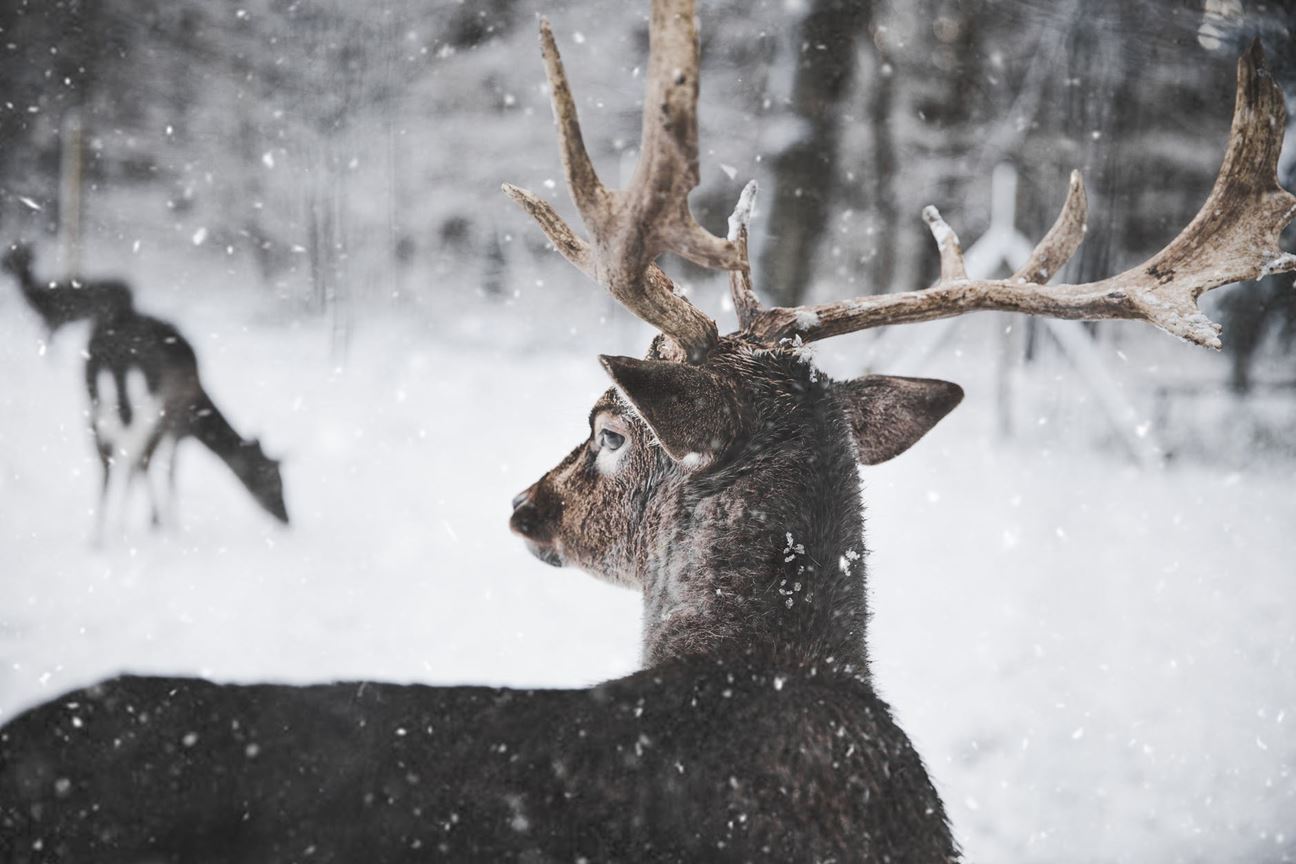Reindeer are associated with Christmas, but these incredible animals have so much more going on!
Prancer, Vixen, Blitzen, Comet and all the other reindeer are probably exhausted from pulling Santa's sleigh to get all the presents delivered by Christmas morning, so it seems only fair that on Christmas Day, we pay a little attention to these incredible animals.
If you've ever thought of reindeer as mythical Christmas animals that exist only to pull Santa's sleigh and be the subject of fun Christmas carols, you should also know that they are in fact very much real!

Reindeer populations are going down and the culprit is climate change. Although the reindeer population is still stable, if environmental factors don't change soon, reindeer may not have a certain future. We'd hate to see these beautiful creatures become a thing of the past... so here are some reindeer facts you may not have known!
Reindeer = Caribou!
For a long time, people considered reindeer and caribou to be different animals, but they're one and the same! Reindeer being the Eurasian name for the animal, and caribou the American one; reindeer and caribou are basically different names for the same animal.
The general understanding is that caribou are wild populations of the animals while reindeer are domesticated. Many tribes and societies in the Arctic region rely heavily on reindeer for food and warm clothing.
There are several subspecies of reindeer, with one subspecies from Greenland completely extinct.
Were Santa's Deer Female?
With most types of deer, it's easy to tell the difference between male and female deer. The males tend to be larger and grow large, intimidating looking antlers. But with reindeer, it's a little different. Most female reindeer also grow fearsome-looking antlers.
But there's an easy way to tell the sex of reindeer. Reindeer antlers grow and shed on a yearly basis, with the timings varying between subspecies. Males shed their antlers in the winter, while females shed theirs in the summer. Because of this little factual tidbit, many people like to think that Santa's reindeer (because they are always depicted with their antlers) are possibly female!
Did Rudolph Really Have a Red Nose?
As it turns out, there may be some truth to reindeer having red noses, albeit not literally. Reindeer bodies are well equipped to handle frigid temperatures and their nose plays a key part in keeping them comfortable in the freezing Tundra.
Reindeer noses have 25% more capillaries with oxygen-rich blood, which helps increase blood flow and keep their noses warm. Warm noses are important to help regulate internal body temperatures and make the stinging cold air easier to breathe.

Shrinking Habitat
Reindeer are known, now, to be exclusively found in the Arctic region — the freezing Tundra being known as their home, but that wasn't always the case! Centuries ago, when climate change was but a bad dream, reindeer could be found as far south as Nevada, USA and Spain!
Climate change has shrunk their habitat range, and Santa's main mode of transport has been relegated to truly cold spots across the globe.
Reindeer Are VITAL to Arctic Communities
For many cultures such as the Sami people and Inuit people in Scandinavia and certain parts of North America, reindeer herding is a significant occupation. Their communities rely entirely on reindeer - making these animals a vital part of their cultures.
For those that eschew meat-eating, in this part of the world, it is very nearly a necessity. With little vegetation available due to months of frozen ground, reindeer are one of the few animals that can be herded for a variety of tasks — from milk and meat to transport. Herding reindeer is to some degree at the heart of communities that are based in frigid regions.
Climate change, however, has reared its ugly head here too and is endangering the livelihood of those that depend on reindeer herding.
Reindeer Fur and Hooves Work Kind of Like Magic!
Some communities that live in the Arctic outfit themselves in reindeer skin to stay warm because there is very little else that works as well. Reindeer have two layers of fur, a thick undercoat and a top layer of hollow hair that traps air (and floats!). The hollow hair allows for better insulation and helps keep reindeer cosy and warm.
Their hooves change by season to make it easier for them to find food. In the summers, their hooves expand and become softer. In the bitter cold seasons, however, these same hooves contract and become much harder to enable reindeer to forage for lichen with ease!
Reindeer Eyes Change Colour!
In the early 2000s, scientists from the University College London studied reindeer's eyes to understand how these animals cope with months of constant sunlight and then another three months of darkness. The study revealed that reindeer's eyes are a beautiful golden colour in the summer and rich, gem-like blue in the winter.
The part that changes colour is the layer behind the retina to help them adjust to the unique conditions of the Arctic region. The months they spend in darkness is considered key to the colour change that happens in their eyes. The definitive answer to why this phenomenon occurs still hasn't been found, but the observations to date are fascinating!
Regardless of whether you celebrate Christmas or not, we can all agree that reindeer are pretty amazing! If you know any cool reindeer facts, let us know in the comments below!